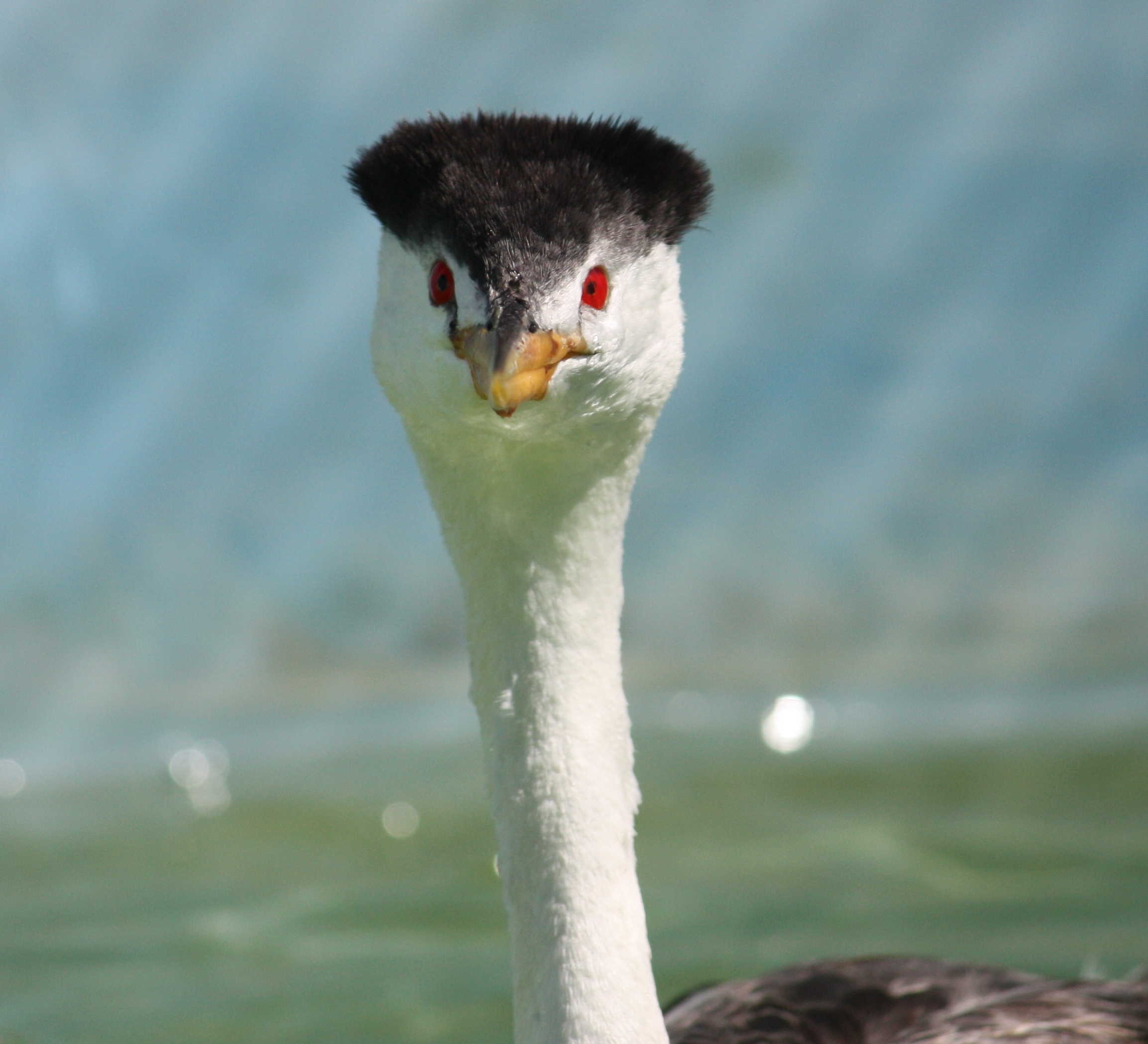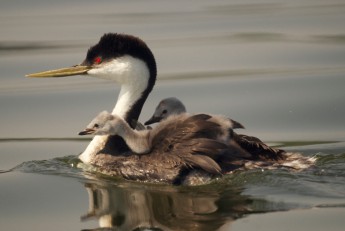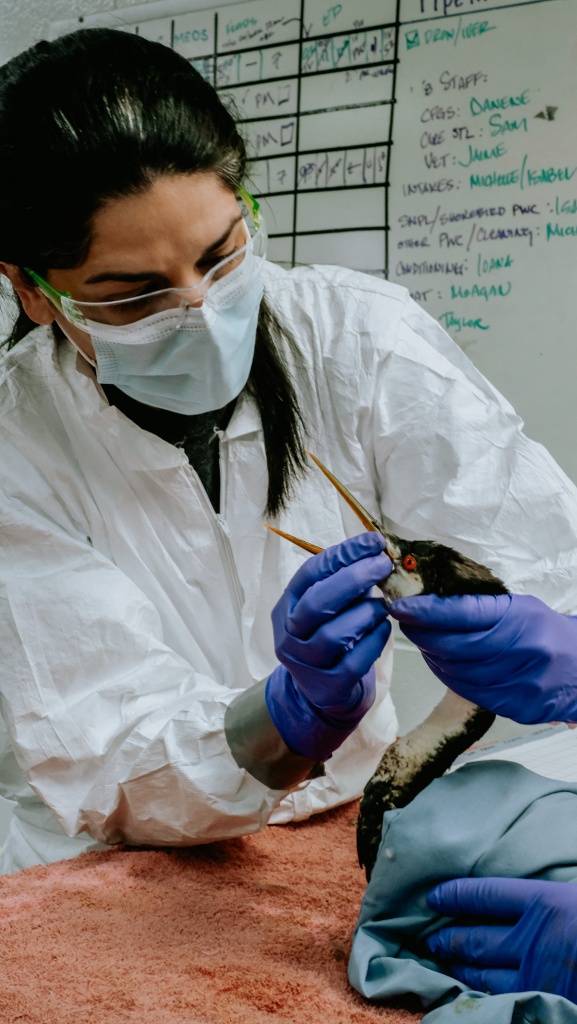
For this week’s blog I decided to delve into the world of grebes, a species that I grew to love (and lose sleep over) during the Pipeline P00547 Response. Grebes were the most abundant, most vocal and most problematic patients, however they were also some of the most fun.
Although the most common species we worked with during the Pipeline P00547 Response were Western grebes, there are actually 22 different species within the genus Podiceps. They can range in size from 120 grams (Least grebe) to 1.7 kilograms (Great grebe), no pun(s) intended. Grebes are migratory and can be found on every continent except Antarctica. In California we have four species of grebes including the Eared grebe, Pied-billed grebe, Clark’s grebe and Western Grebe.

Grebes are aquatic diving birds who spend their entire lives on water (unless they are forced on land by something like…an oil spill). Nearly everything about their anatomy has evolved for life in/on water. They have large feet with broad lobes, shifted toward their hind end, all of which facilitate skilled and precise swimming and diving. Unlike many other water birds, their wings are small and let’s just say, flying isn’t their strong suit. As such, they will dive to evade predators rather than fly away. Grebe beaks are long, sharp and pointy, perfect for impaling small crustaceans (also eyes…don’t forget your safety glasses!).
Another unique adaptation is their dense plumage with strong interlocking barbules and hooks. Anyone who has ever tried to part a grebe’s feathers in search of underlying skin knows what I mean. When their feathers are fully intact, grebes are completely waterproof, which allows them to maintain their temperature despite living in water. Grebes can even adjust the angles of their feathers to alter the amount of air trapped between their feathers, thus changing their buoyancy. In order to keep their feathers in tip top shape grebes regularly preen. They also swallow some of their discarded feathers (and even feed them to their young) to aid in digestion. Now when I say “some feathers” I actually mean a surprising number…think a cat hairball but sub in gooey feathers.
These adaptations are GREAT for a grebe living in water, not so much for a grebe forced onto land. Why might a grebe be forced onto land? [cue drumroll] … OILING. Oil disrupts the waterproof barrier that is their feather structure. Water then seeps between their feathers and comes into contact with their skin. They then lose body heat and buoyancy VERY quickly. Imagine a wet suit with tears all over it. In order to preserve warmth, grebes will find their way to land.
Once on land grebes can’t eat or drink – resulting in dehydration, loss of body condition and gastrointestinal issues. Due to the position of their legs, they have difficulty walking so they lay hunkered down in one position—resulting in keel sores and foot and hock lesions. And don’t forget they’re oiled and hypothermic (cold).
By the time an oiled grebe finds its way to a primary care center, it already has at least one (if not all) of the above listed ailments. As the veterinarian my goal is not only to treat the existing problems but also to prevent new ones. Sounds simple, right? They gray hairs on my head would beg to differ. We can correct dehydration and loss of body condition with supplemental fluids and nutrition. Gastrointestinal issues are a constant battle due to the absence of a natural diet, stress, parasites, decrease in preening or clean feathers for consumption, absence of sea water, or any combination thereof. Because of their oiling status and thus need to be out of water temporarily, we house our grebe patients in “net bottom pens” (exactly what their name describes) where they stay through pre-wash care and the early stages of conditioning. Only once they are waterproof can they go back to living in water full time. We use keel cushions, booties and various treatments to fight the seemingly never-ending battle with keel, foot and hock lesions.
Despite their many ailments and complexities as patients, I’ve truly grown to appreciate their unique anatomies, personalities and even the (in)famous grebe scream. Click here (and turn up your volume) if you’d like to too!




